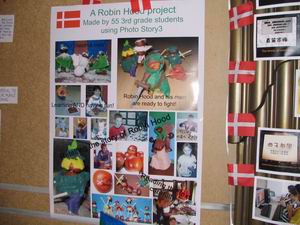Robin Hood
Signe Sloth Silkeborg, Denmark Subjects: Danish, music, science, ICT Learners: grade 3; ages 9–10 years old The children read the book “Robin Hood” and were divided into 16 groups, according to the number of chapters. Each group was tasked with finding key points to develop their interpretation of the chapter. Learners then had to retell the story and make it come alive through pictures and background music using Microsoft Photo Story 3. They made chestnut men and women and accessories, took at least five digital pictures of their settings and then used the software package to create a presentation. “Each group had to know the chapter very well to be able to find the important sections,” Sloth says. “The project used expressive computational tools to create meaning. It covered language, arts, picture composition and music, all with a strong focus on team work and collaboration.” Learners had to do a lot of critical thinking and planning: keeping track of the overall story, discussing ways to make the individual chapters work well together, figuring out where to take photos. According to Sloth, the project empowered learners who had a hard time reading and writing because it allowed them to tell a story without having to write too much. “When you put a story into form, you learn something about yourself,” Sloth says.
|
Themes: Content
|
|
Other innovation examples
